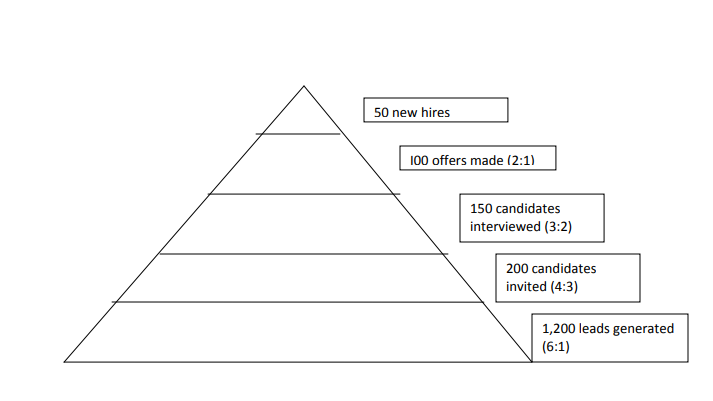Assuming the company authorizes you to fill a position, the next step is to develop an applicant pool, using one or more of the recruitment sources described below. It is hard to over emphasize the importance the importance of effective recruiting. The more applicants you have, the more selective you can be in your hiring. If only two candidates apply for two openings, you may have
little choice but to hire them. But if 10 or 20 applicants appear, you can use techniques like interviews and test to screen out all about all the best.
Effective recruiting is increasingly today, for several reasons. First the ease of recruiting tends to ebb and flow with economic and unemployment levels. High average turnover rates for some occupations are another problem; the increased emphasis on technology and therefore on skilled human capital also demands more selective hiring and thus a bigger applicant pool Finding the right inducements for attracting and hiring employees can be a problem. Aggressive recruiting is therefo0re often the name of the game. “Poaching workers is fair game”. Some recruiters even have their own jargon. They call luring workers away from other high- tech firms “nerd rustling’.
The Recruiting Yield Pyramid
This is historical relationship leads and invitees, and interviews, interviews and offers made, and accepted. Some employers use a recruiting yield pyramid number of new employees. In the figure below (figure 3.1) the company knows the ratio of offers made to actual new hires I 2 to 1; about the people to whom it makes offers accept them. Similarly, the firm knows that the ratio of candidates interviewed to offers is made is 3 to 2, while the ratio candidates invited for interviews to candidates actually interviewed is about 4 to 3. Finally, the firm knows that of six leads that come in from all its recruiting efforts, only one applicant typically gets an interview- a
6 to 1 ratio.
Given these ratios, the firm knows it must generate 1,200 leads to be able to invite 200 viable candidates to its offices for interviews. The firm will then get to interview about 150 of those invited and from these it will make 100 offers. Of those 1000 offers, about 50 will accept.

Recruiting may bring to mind employment agencies and classified ads, but current employees are the best source candidates.
Filling open positions with inside candidates has many benefits. First, there’s really no substitute for knowing a candidate’s strengths and weakness. It is often therefore safer to promote employees form within, since you’re likely to have a more accurate vies of the person’s skills than you would an outsiders. Inside candidates may also be more committed to the company.
Morale may rise, to the extent that employees see promotions as rewards for loyalty and competence. Inside candidates may also require less orientation and training than outsiders. However hiring from within can also backfire. Employees who apply for jobs and don’t get them may become disconnected telling unsuccessful applicants why they were rejected and what remedial actions they might take to be more successful in the future is thus crucial. Similarly, many employers require managers to post job openings and interview all inside candidates. Yet the manger often knows ahead of time exactly whom he or she wants to hires. Requiring the persons to interviews a stream of unsuspecting inside candidates can be a waste of time for all concerned. Groups are sometimes not as satisfied when their new boss is appointed from within their own ranks as when he or she is newcomer: it may be difficult for the insider to shake off the reputation of being “one of the gang”
Inbreeding is another potential drawback. When all managers come up through the ranks, they may have a tendency to maintain the status quo, when a new direction is required. Many “promote from within”. Balancing the benefits to morale and loyalty with the possible inbreeding problem can be a challenge.
